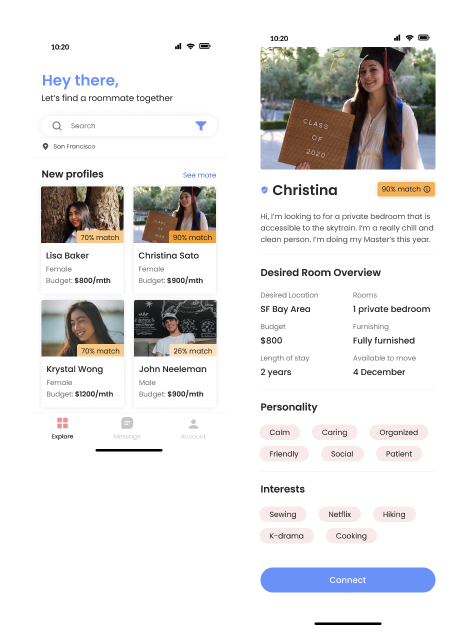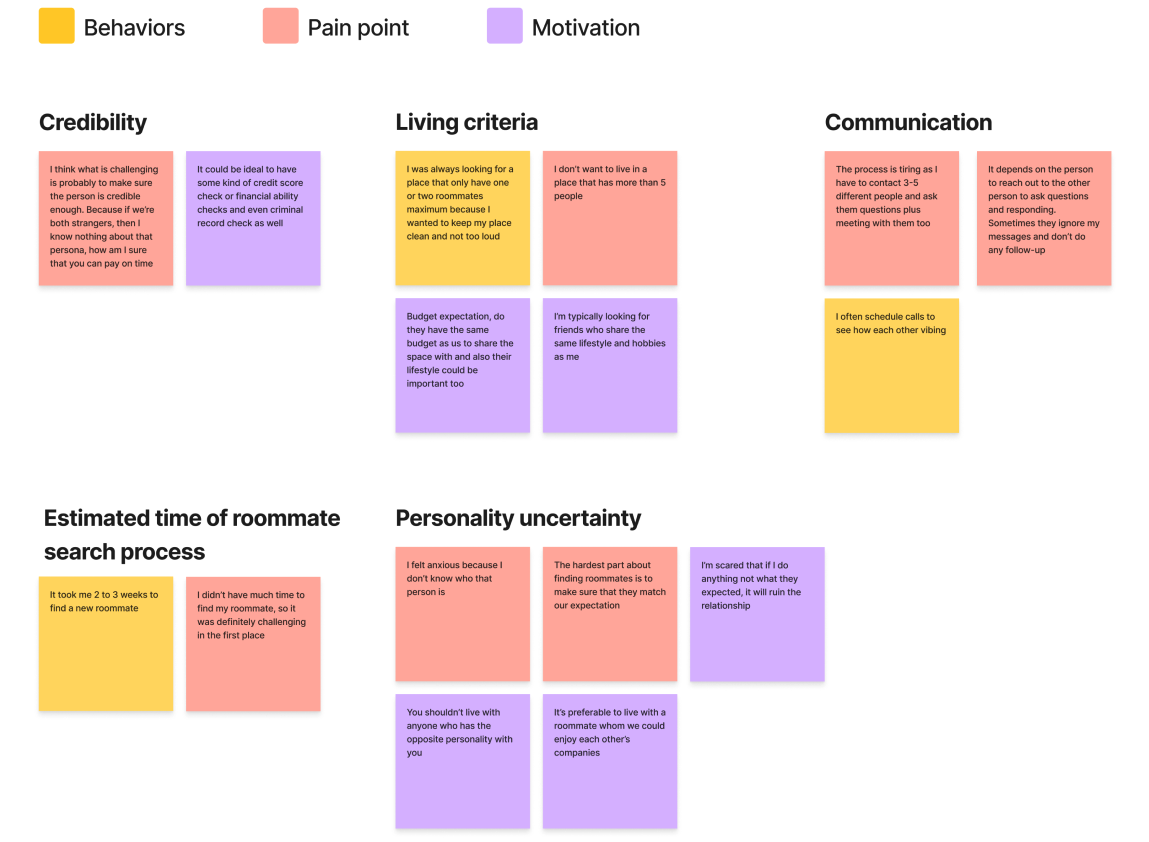UX Case Study – MateHive
Challenge: Compatibility concerns are causing increased stress for college students during their roommate search.
Deliverables: Strategy. User research report. Persona. Task flows. Sketches. UI. Prototype.
Role: Product Designer
MateHive assists students in finding the ideal roommate by matching shared interests, hobbies, and personal preferences.
Challenges
Compatibility Uncertainty
Compatibility concerns are causing increased stress for college students during their roommate search.
The number of people opting for shared living arrangements, particularly among those aged 20-34, has grown significantly. College students, in particular, are facing increased difficulty in finding compatible roommates, as they often rely on online platforms that can connect them with unreliable or unfamiliar individuals, leading to added stress and uncertainty.
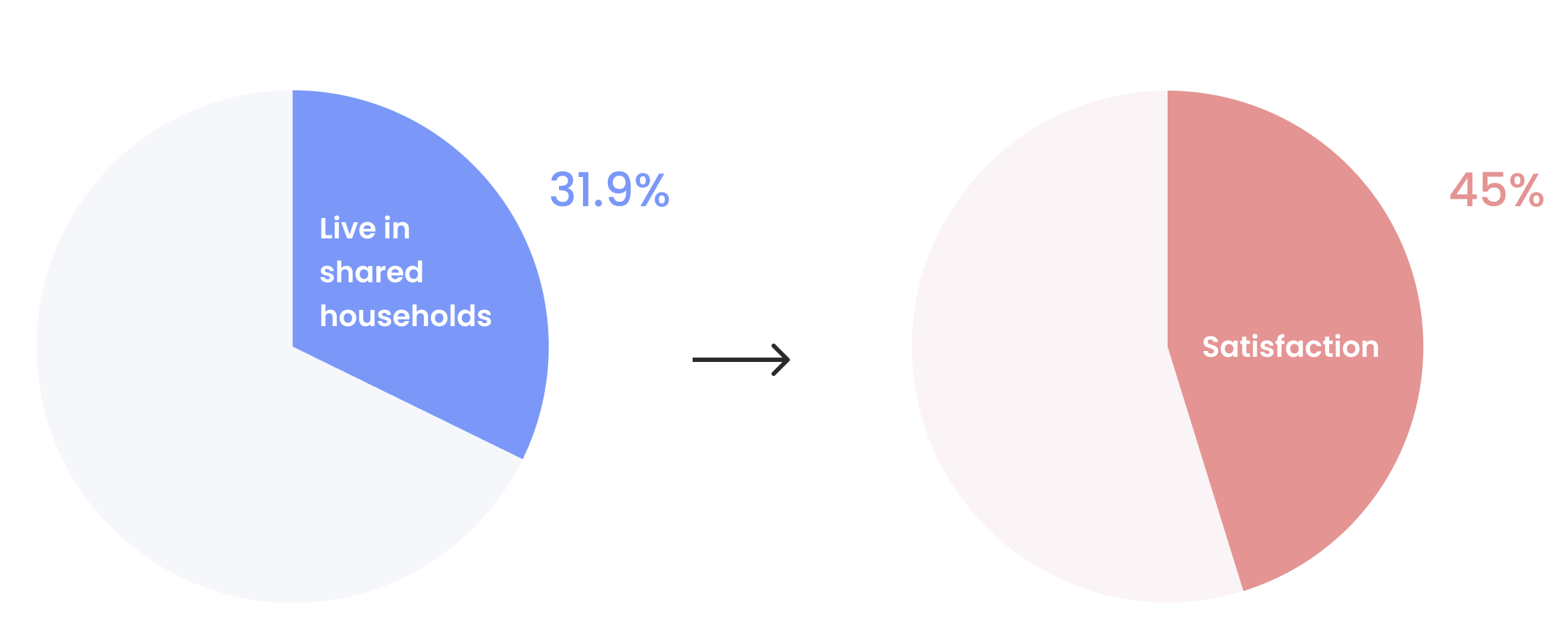
31.9% of households are shared with at least one adult who isn’t a spouse, romantic partner, or college student.
Nearly 45% of renters with one roommate are satisfied with the arrangement
https://getflex.com/blog/roommate-statistics/
Project Context
Project Goals
From the onset, I focused on establishing clear success metrics and defining specific goals for this UX initiative.
1. Understand student roommate search behavior
Investigate the current process students use to find roommates, identifying their key pain points, motivations, and overall experience with available platforms.
2. Pinpoint stress and anxiety factors
Identify the primary sources of stress and anxiety that students encounter when searching for a compatible roommate.
3.Determine success factors in roommate matches
Analyze the common factors that contribute to students successfully finding compatible roommates and how these insights can improve the search experience.
User Interview
User Interview insights
I conducted three qualitative user interviews to gain insights into college students’ feelings, behaviors, motivations, and sources of stress during the roommate search process. The participants were individuals with prior experience finding roommates for shared rental properties.
Takeaway
Personality compatibility is a major source of stress, as students worry about how well they will get along with someone they’ve never met. Additionally, the time required to find a suitable roommate adds pressure to the process, further contributing to their anxiety and uncertainty.
Analysis
From my user testing notes, patterns emerged, and I grouped similar pain points through affinity mapping. I categorized the findings based on Havenly’s core functions: getting inspired, exploring and shopping for products, and finding professionals. This helped prioritize the most impactful areas to focus on, which was crucial given the project’s short timeline.
How might we make it easier for college aged students from 18-25 to find ideal roommates so that they can enjoy each other’s company?
Design Iteration
From Insights to Personas
After identifying the key insights and the HMW statement, I started narrowing down the persona for the application.
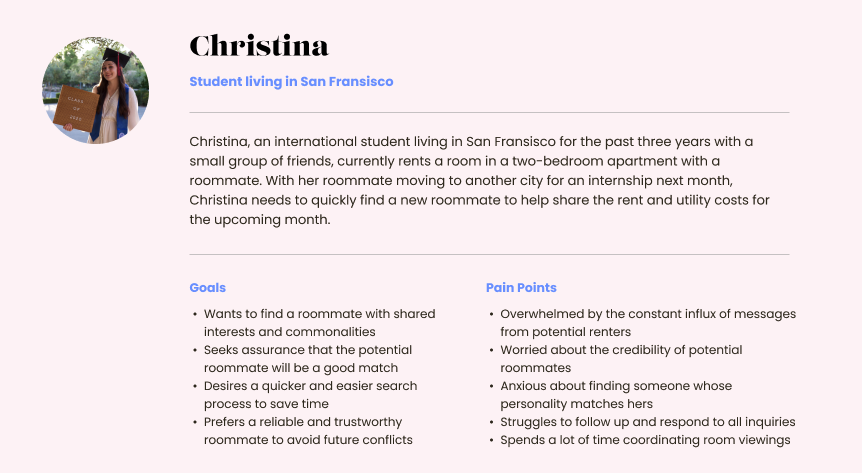
Task flow Chart
After identifying the primary tasks, I designed a task flow diagram outlining the steps users take to choose a suitable roommate and review potential candidates before arranging a meeting. This flow was crafted to reflect how users engage with the digital platform.

Sketches
Task Flow
To begin the ideation phase, I sketched out initial concepts on paper, iterating them to find the most user-centric design solutions. By focusing on user needs, I identified key expectations for pages like exploration, profile viewing, and chat, ensuring the design aligns with what roommate searchers are looking for.
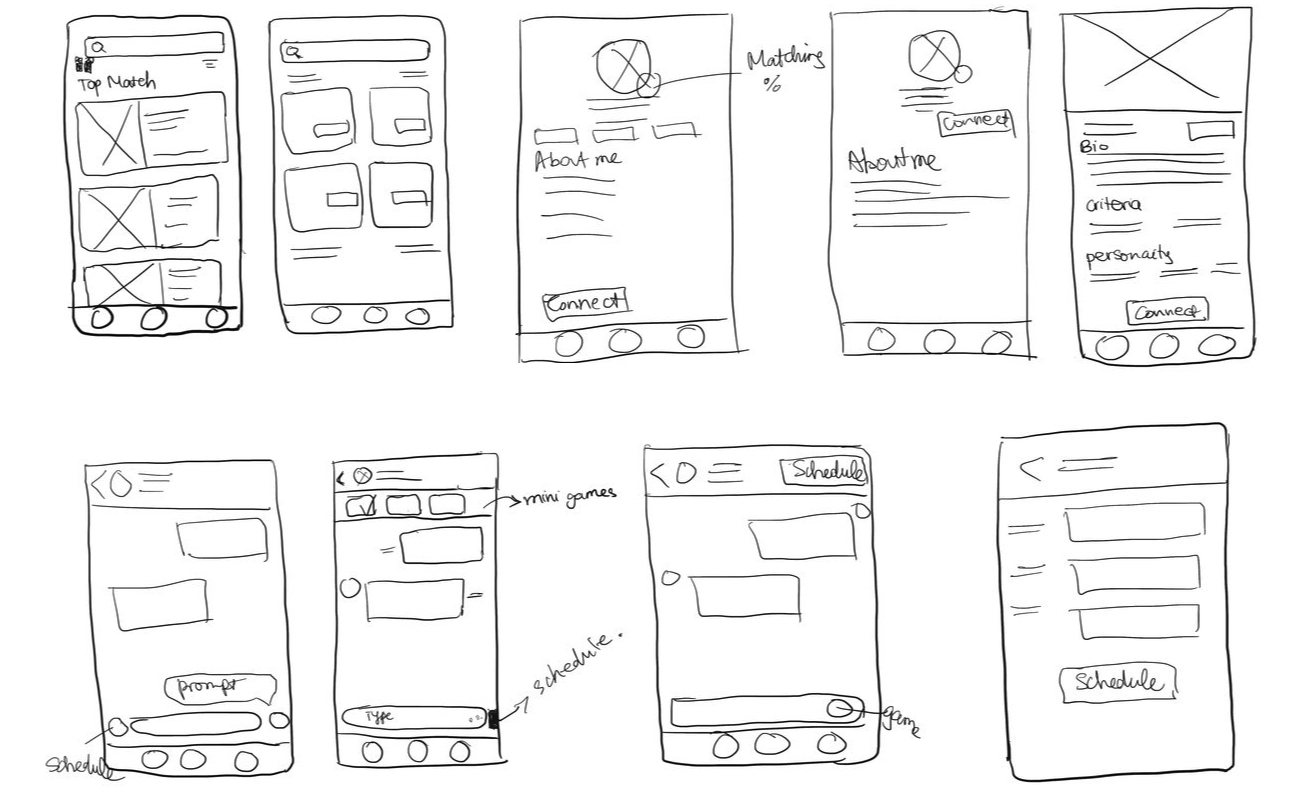
Design Exploration
Outcomes
When working on the final design, I make sure that my design elements addressing the concerns identified by the users. I introduced the visual elements of percentage matching and what the person likes or dislike and also the verification of the users when they contact with the strangers
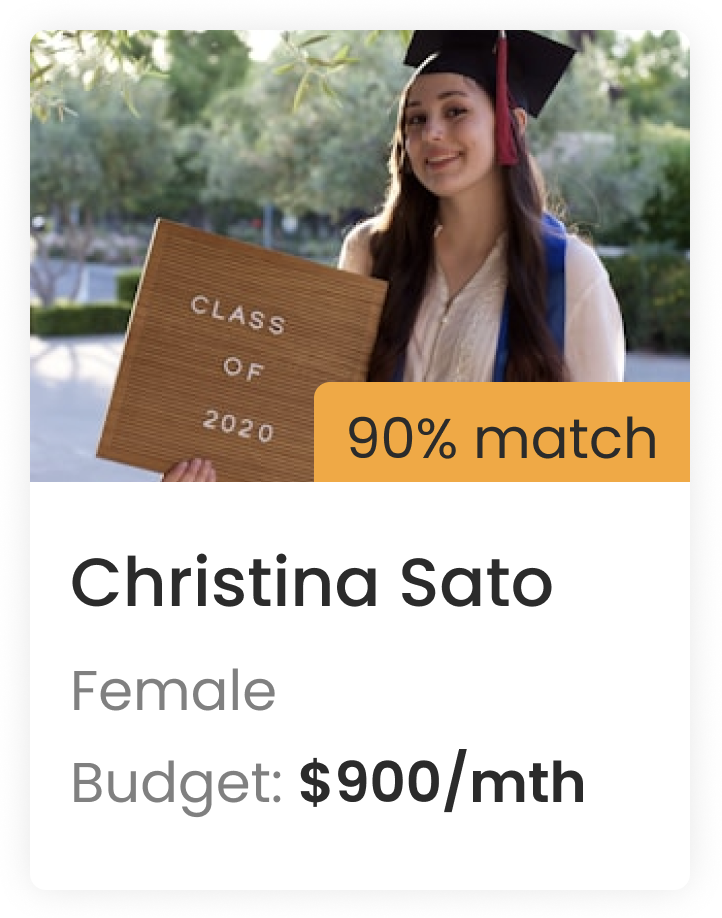
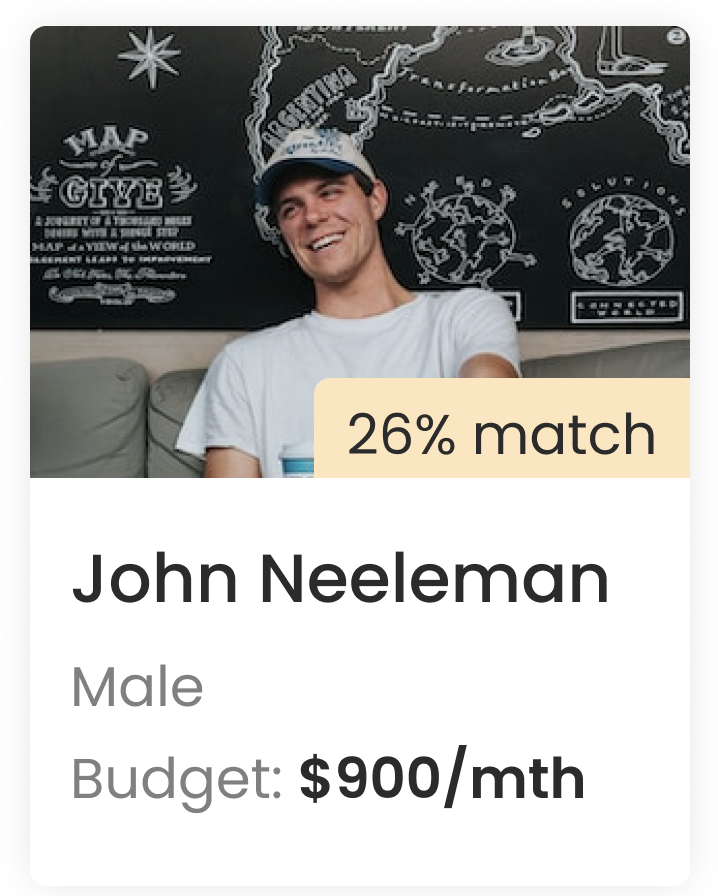
A matching algorithm from user’s personality and interests input helps users find the best possible match
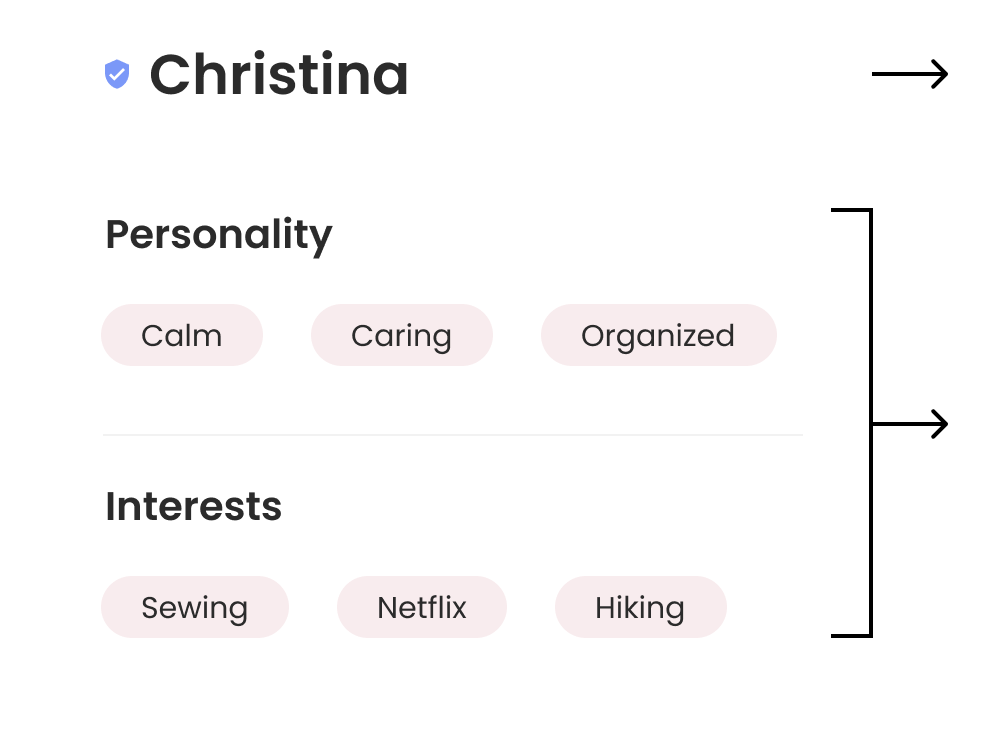
Accounts are verified so users will feel safer and more comfortable to use the app without concern about the reliability.
The ability to connect with potential roommates who are more likely to get along and have similar living habits
Homepage
The app leverages a matching algorithm based on users’ personality traits and interests to help students find the most compatible roommate, increasing the chances of shared living habits and mutual understanding.
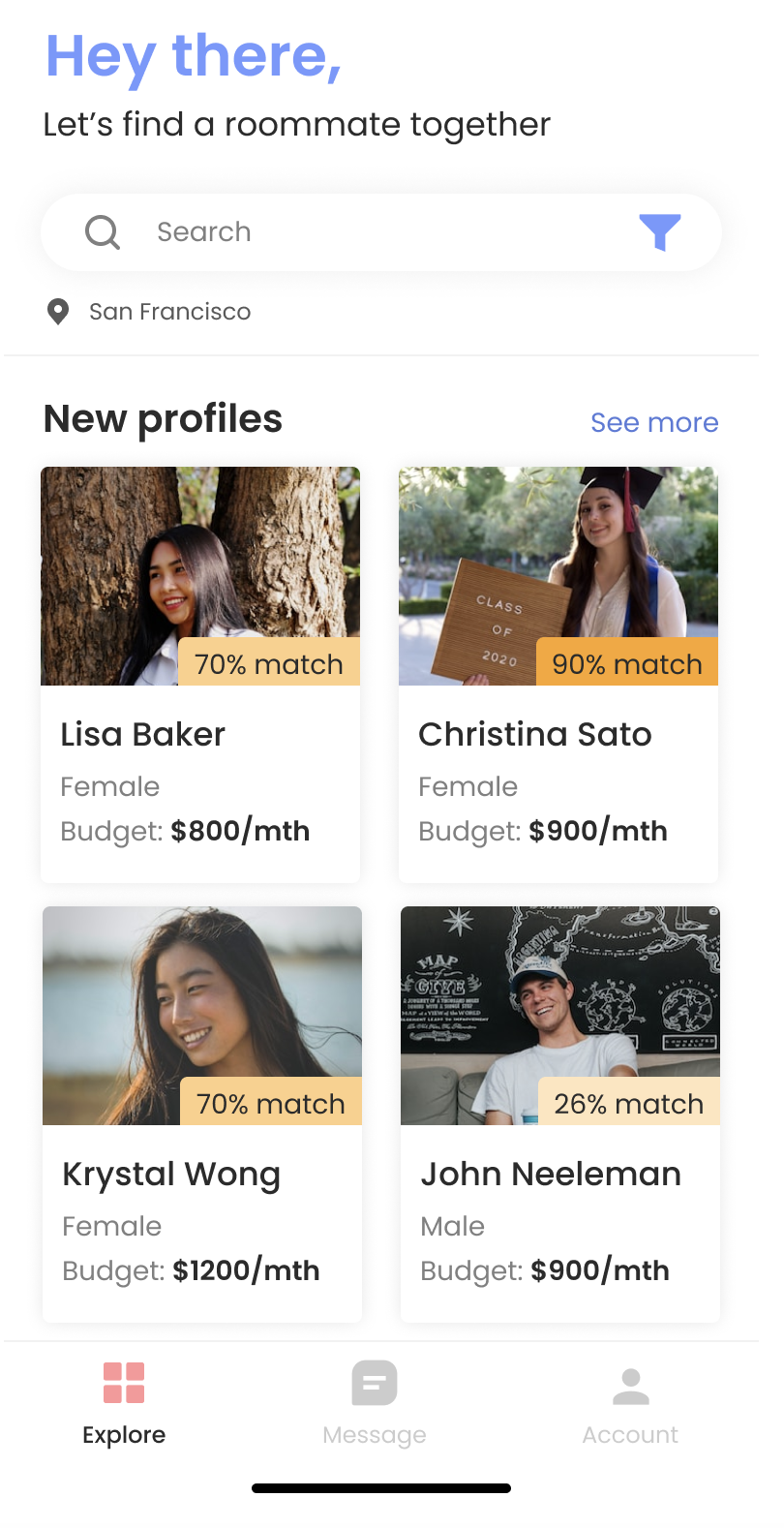
Schedule room viewing
The app includes a scheduling feature within the chatbox to streamline the time-consuming process of arranging room viewings. This allows users to quickly set up appointments with potential roommates, helping to save time and stay organized.
